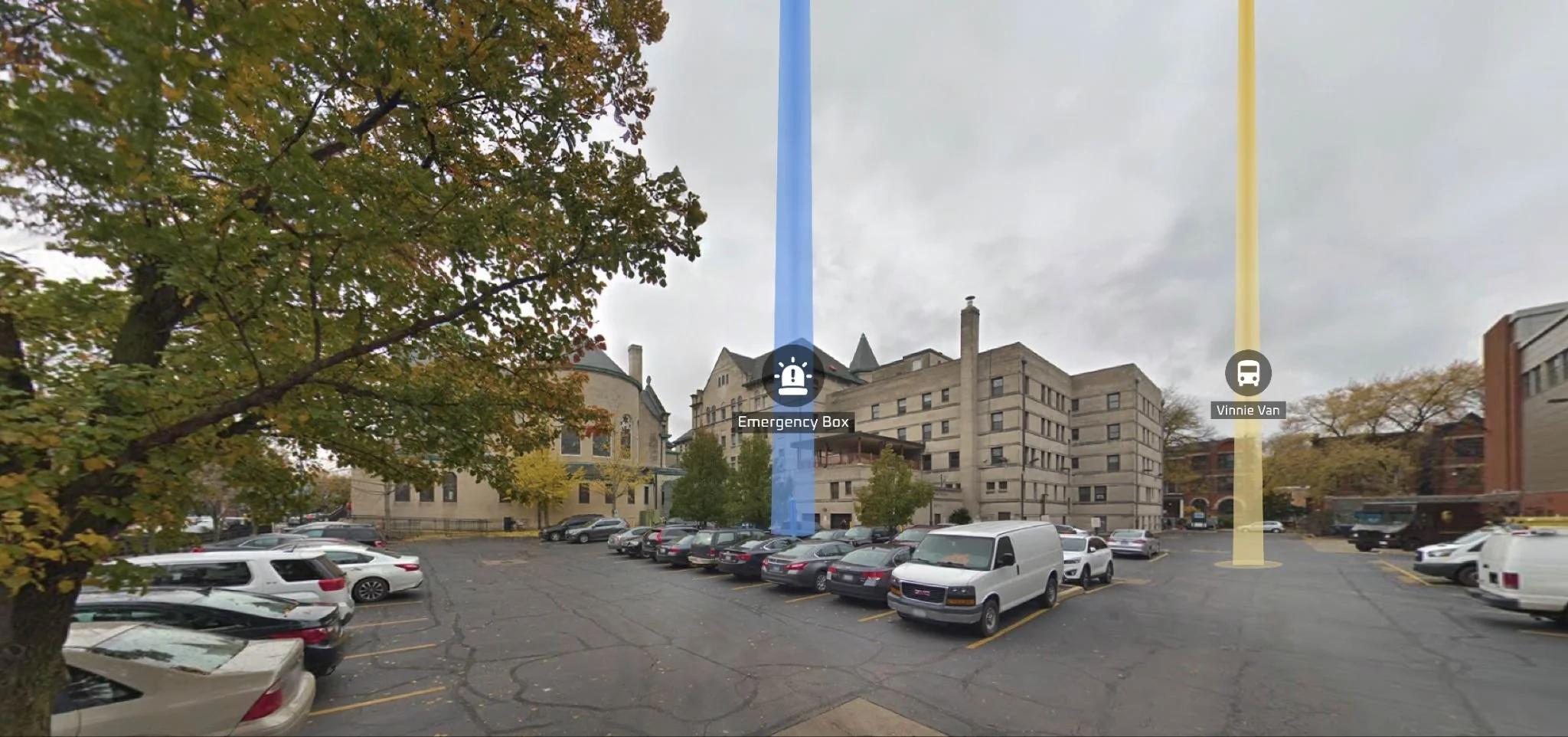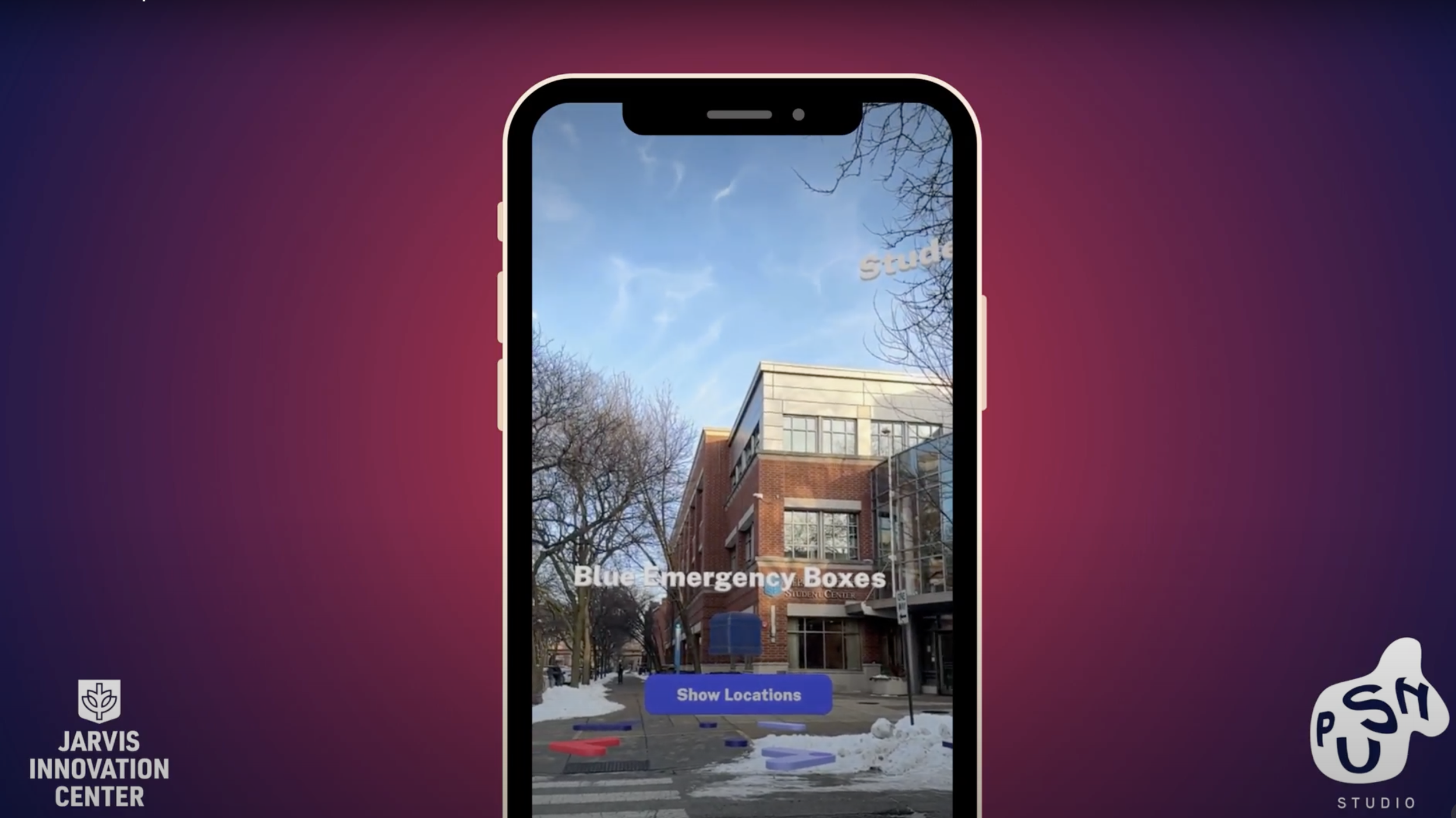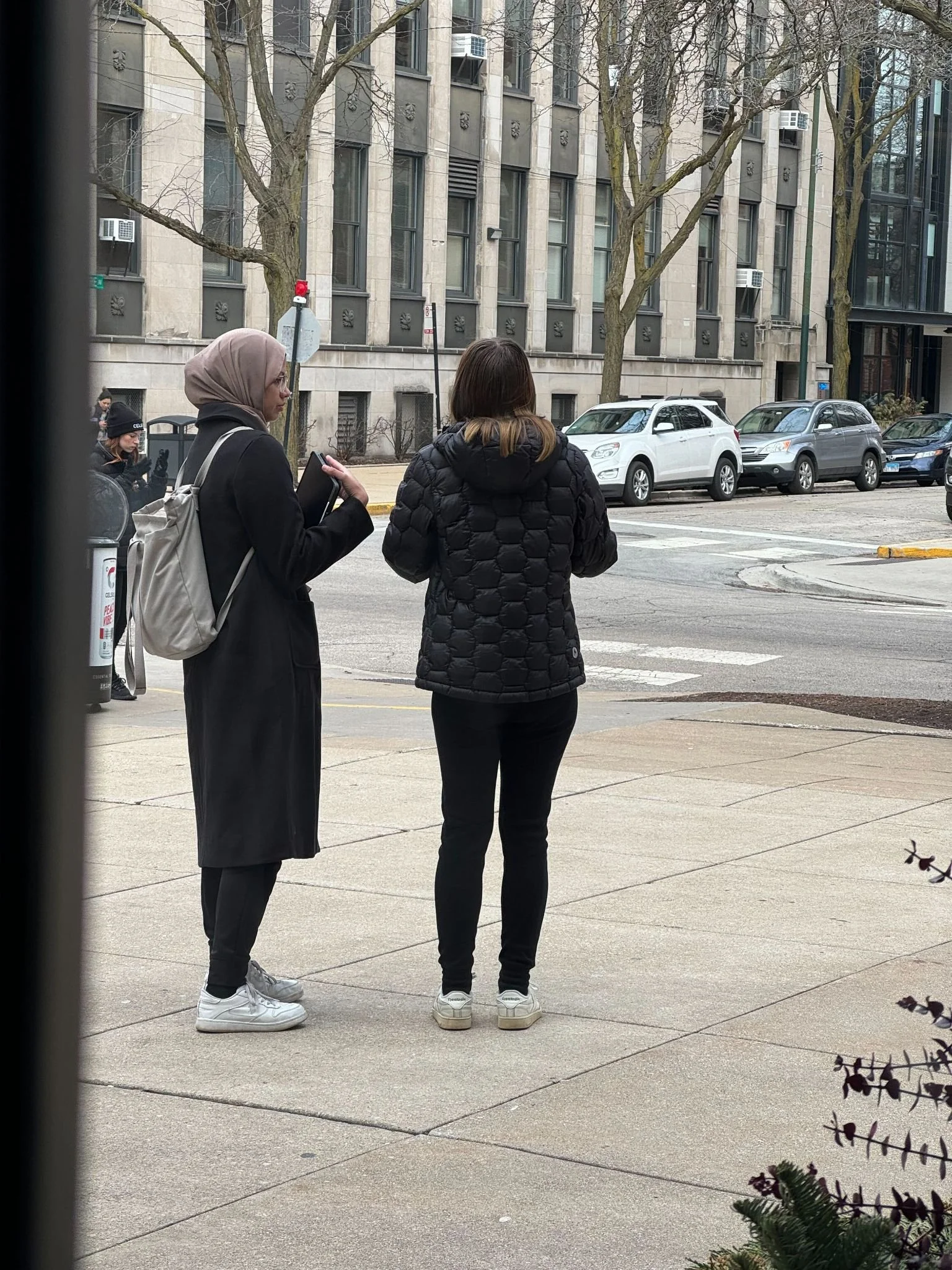

AR-CS:
University campus locations and safety resources for students visualized through augmented reality.
Background
The AR-CS (Augmented Reality Campus Safety) project was inspired by the 2024 Google Spatial Challenge and a noticeable uptick in crimes near DePaul University's campus, which has caused heightened concern among students. These incidents raised an important question: how can augmented reality be leveraged to enhance campus security? While many colleges have their own campus apps, few are specifically dedicated to addressing safety concerns through emerging technologies like Augmented Reality. This project aims to fill that gap by developing an AR navigation app that not only guides students around campus but also brings awareness to the many security resources available on DePaul’s Campus.
Challenge
One of the main challenges identified was the underutilization of blue emergency phones located around the campus. Many students are unaware of their existence or their purpose, leading to these potentially life-saving resources being neglected. Additionally, integrating AR and navigation presents its own set of difficulties. AR navigation can sometimes be distracting or non-intuitive, posing safety risks rather than mitigating them. Ensuring that the AR features are both helpful and safe for users is a critical aspect of the project.
Deliverables:
High-fidelity interactive prototypes
PUSH services:
UI/UX design, User Research, Technology Prototyping
Domain:
Augmented Reality, Campus Safety, High-Fidelity Prototypes
PUSH team:
Ammar Alghamdi
Niharika Desireddi
Humaira Tasneem
Caroline Rumani

Student Testing Research Report
A/B Testing Comparison Images
Approach
The development of AR-CS began with initial prototypes created in Adobe Aero, utilizing Geospatial Creator which employs photorealistic 3D tiles—the same mapping source data used by Google Earth. This allowed for the creation of highly detailed and accurate 3D maps of DePaul’s Lincoln Park campus. The team conducted extensive UI/UX testing to determine the most effective ways to display building names and highlight blue emergency phones. Inspired by video games like Fortnite, "pillars of light" were used to mark these safety resources and other building locations. Testing involved both controlled classroom environments with professor cooperation and intercept testing with volunteer students on DePaul’s Lincoln Park and Loop campuses to gather a wide range of user feedback.

Solution
Currently, the project is on its third prototype version and is transitioning into Unity for a higher-fidelity version of the app. Unity offers enhanced capabilities for creating detailed and interactive AR experiences. Despite this transition, Adobe Aero will continue to be used for quick prototyping and testing, ensuring that new features can be rapidly developed and evaluated. This iterative approach allows the team to refine the app continually based on user feedback and technological advancements, aiming to create a robust and user-friendly AR navigation tool that significantly improves campus safety for DePaul students.
Screenshot from Promotional Demo Video
Intercept Testing with DePaul Student





